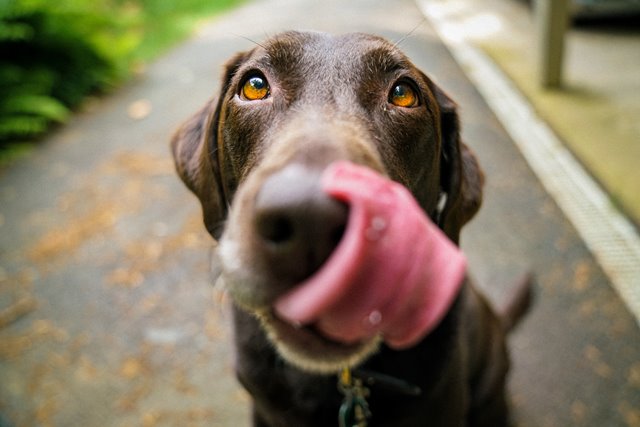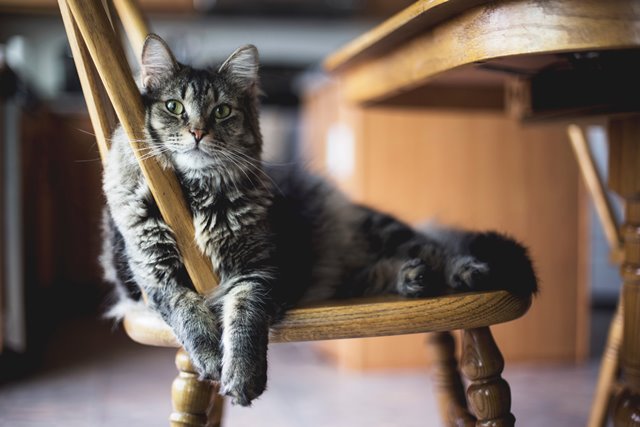Obesity and weight loss in dogs and cats

Why is it an issue?
It’s no secret that obesity in humans is associated with various health problems; with arthritis, diabetes, high blood pressure, and heart disease all linked to a larger waistline. However, despite our obsession with our own weight, many of us don’t realise that the same issues apply to our pets. Through its connection with various health issues, obesity in dogs and cats has a very real effect on the quality of life, and can also affect life expectancy, with overweight animals living shorter lives compared to their leaner counterparts.
A huge proportion of our pets’ diet and lifestyle is dependent on us, and as their owners, it’s our responsibility to make decisions to make their lives as happy and comfortable as possible. Below we’ve included some useful information for keeping your pet in shape, and some practical advice for weight loss if they need to shed a few pounds!
You can use the links below to jump straight to a section if you prefer:
1. Healthy Habits - Start Them Young
4. Practical Advice for Weight Loss
Healthy Habits - Start Them Young
The evidence looking into obesity in humans and our pets suggests that the foundations of obesity are laid down from a very young age, and our pets’ diets in these early stages are of vital importance for several reasons. Firstly, puppies and kittens begin developing food preferences as soon as they are weaned onto solid food, so it’s important that we start them off on a high quality pet food as soon as possible so that they don’t turn into fussy eaters later in life. Secondly, if we feed them titbits and reward bad behaviour (like begging at the table!) from a young age, then they will likely continue this behaviour into adulthood. And finally, it’s not just obesity that’s a concern at this stage; many breeds (particularly large breeds of dog) can develop joint and bone problems if they grow too quickly.
This all may sound quite daunting, but remember that most young animals will visit the vets quite frequently throughout their first year of life (for vaccination, worming, neutering etc.) Your vet will be able to give you advice on your pet’s weight that is tailored to their specific breed and age, and you can then adjust your feeding accordingly to achieve the optimal growth rate and avoid them becoming overweight.
Weight Loss
As we’ve mentioned above, prevention is the best medicine when it comes to obesity. However, maybe you’ve recently adopted an adult pet that’s already a bit chubby, or perhaps you’ve only just become aware of the negative effects obesity can have. Either way, the first step when it comes to weight control is finding out whether your pet is truly overweight.

Is My Pet Overweight?
Weighing scales are an excellent tool for measuring changes in your pet’s bodyweight. However, you can’t simply weigh your pet and expect to know whether he or she is overweight, as so many other factors can affect bodyweight including age, breed, and sex. If you search the internet you’ll also find tables of ‘ideal weight’ for certain breeds at certain ages, and although these can be a useful tool they still don’t account for individual variation between animals.
The best way to assess an animal's weight is to look at its ‘Body Condition Score’ (BCS), a scoring system used by veterinary professionals which takes into account body shape and fat coverage. A healthy animal should have a clearly defined waist (its body tapers between the ribcage and the hips when viewed from above), and the ribs should be easily felt without needing to apply too much pressure. If your pet has no waist, a potbelly, and you can’t feel its ribs, chances are they could do with shedding a few pounds.
In general vets and nurses are best placed to assess the BCS of your pet. However, with practice, pet owners can learn to judge this effectively too.
Practical Advice for Weight Loss
We all know that losing weight can be difficult at times, but with the dedication of a committed owner it can be achieved by following a few simple steps:
1. Set Targets, Monitor Progress
Any weight loss program should begin with setting targets. Speak with your vet who will be able to advise you of an approximate healthy target-weight for your pet based on their individual size and shape. (Bear in mind that their target-weight is only a rough estimate, and your vet may adjust it slightly as your pet loses weight, based on how their BCS is changing.)
The rate of weight loss is also important, as losing weight too quickly can also be bad for your pet’s health. A target of around 3-5% of bodyweight/month is a good rough guide, but again your vet will help you decide on what rate of weight loss is appropriate for your pet.
Once you’ve set your targets, be sure to monitor your pet’s progress! It may be tempting to weigh them every day to check how things are going, but weight loss can be a slow process and weighing too often can lead to frustration (and maybe a fed up dog or cat!) A better idea is to spread out your weight checks (once or twice a month is reasonable), and be sure to keep track of the results.

2. Reduce Calorie Intake
The calories in your pet’s food are a factor of both the amount of food, and the calorie density (how rich in energy the food is). This provides us with two simple methods for calorie reduction:
The first is portion control, and the first step within this is making sure that you accurately measure the amount of food, so that you’re feeding a consistent amount every day. This can be achieved with measuring scoops or weighing scales; and by keeping track of the number of treat’s you are giving. To begin with, aim to reduce your pet’s portion size by around 10-15%, and then weigh them after one month. If they have lost weight then continue feeding the same. If they’ve not lost weight after a month, reduce the food by another 10%, and try again until you achieve your desired rate of weight loss. Once they have reached their target-weight, continue weighing them monthly and adjust their food accordingly until you find the right amount to maintain their new healthy weight. (Note – if your pet is consistently failing to lose weight despite consistent calorie reduction, seek advice from your veterinary surgeon.)
The second method is to reduce the calorie density of the food. You can do this by switching over to a calorie-controlled pet food (available from most vets and pet shops). Feeding a calorie-controlled food means that you can keep portion size the same, helping to keep your pet feeling full despite the reduction in calories. It’s also a good idea to cut out the high-calorie titbits you may have been feeding (including most human foods!) It’s no problem if you still want to give your pet a treat from time to time, but consider lower-calorie options such as carrot, cucumber, or specially made low-calorie treats.
3. Exercise
If you’ve ever been looking to lose weight yourself, you may have heard the expression ‘you can’t outrun your fork!’ This refers to the fact that exercise alone is usually not enough, and needs to be accompanied by healthy dietary changes to achieve the desired result. With this said, exercise can be a helpful weight loss tool if used correctly. Be sure to start slowly, especially with older dogs and cats where exercise could exacerbate any joint problems, ultimately having the opposite effect on their activity levels! For dogs, try to increase their walking in small increments up to a level that you think they can handle (your vet will be able to advise you further on this). With cats, try to play with them more – interactive toys with automatic moving parts can be effective, but don’t underestimate the power of a simple toy mouse on a string!
Reducing a pet’s weight can seem like a daunting prospect for many pet owners. However, by applying the simple steps outlined here with a patient and determined approach, any pet owner can achieve the weight loss goals that will help make their pet’s life happier and healthier.
News

